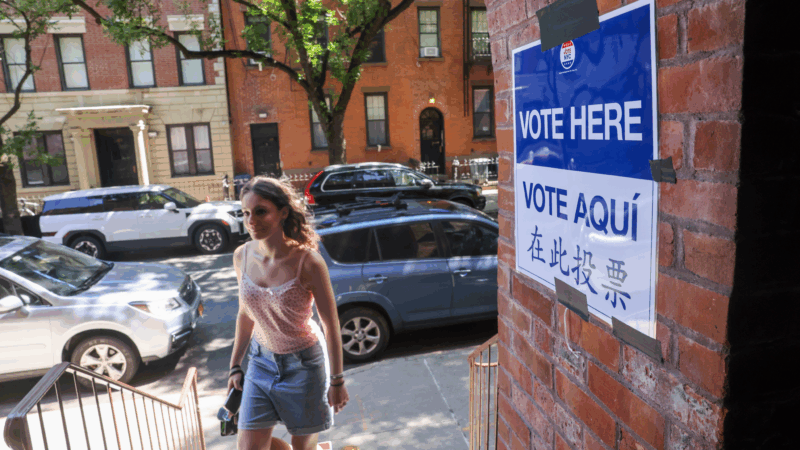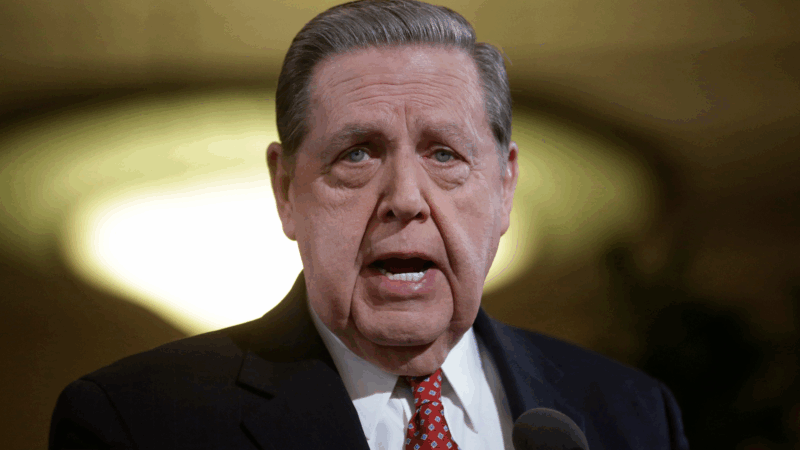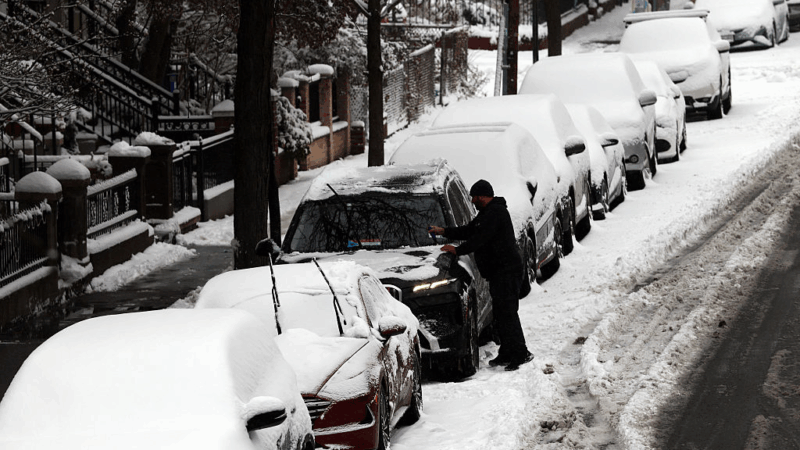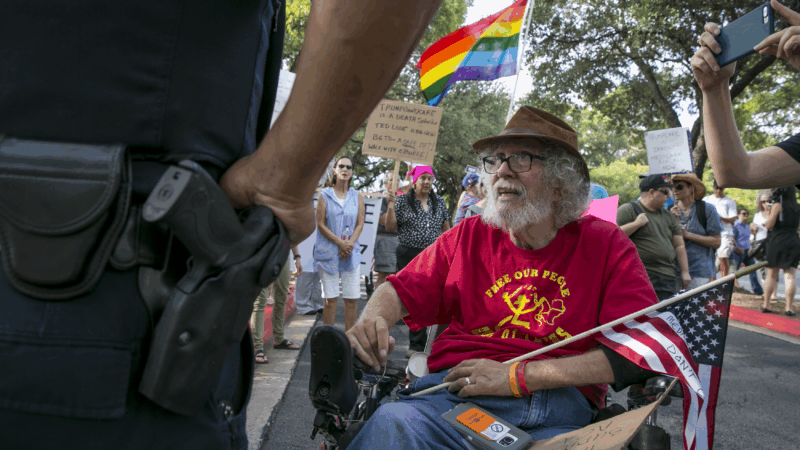New York City may move its mayoral elections to even years. It’d be part of a trend
One of the most closely watched elections this fall is New York City’s mayoral race. But New York voters will also weigh in on a lesser-known proposal that could move future city elections to even-numbered years.
It’s part of a growing trend to consolidate election dates — adding local races to the ballot during presidential and midterm elections.
Proponents of the effort say it counters persistently low turnout for local elections, despite concerns about local issues and candidates getting overshadowed.
Right now, most local races across the country — for things like city council, school board and bond measures — are “off-cycle,” or don’t coincide with federal elections, according to Katy Owens Hubler, director of elections and redistricting at the National Conference of State Legislatures.
“So, all throughout the year, you know, any given Tuesday, there’s probably an election somewhere in the country,” she said.
Many states require in their constitution that local races be separate from federal and state elections. About a third of states leave it up to local officials to decide when to have local elections, said Zoli Hajnal, a political science professor at UC San Diego. And most local officials choose to have their elections during odd-numbered years.
“I think it’s the sort of feeling of not wanting to get lost in the shuffle,” said Hubler, adding that city leaders often worry their smaller contests and local issues will be overshadowed by bigger races.
“There could also be a campaign finance aspect of this where they feel that they can’t actually raise the funds that they need to run a campaign because they’re competing with the state-level candidates or even national-level candidates,” she said.
A main driver for reform: “extremely low” turnout
Holding local races in odd-numbered years, though, has resulted in what Hajnal describes as “extremely low” turnout — and it’s only gotten worse over the past several decades.
“And there is essentially no better solution to low voter turnout at the local level than moving local elections to the same day as statewide and federal elections,” he said.
Hajnal uses Las Vegas as an example. When the Nevada Legislature first gave cities the option to move their local races to even-numbered years, very few cities made the change. Turnout in Las Vegas averaged about 37,000. But once it was required in 2019, the first election on-cycle saw more than 244,000 Las Vegas voters cast ballots.

Another benefit of moving local races, Hajnal said, is that it also expands the electorate.
“So as you move to on-cycle elections, you also change the mix of voters,” he said. “And the biggest thing is you get a lot more younger voters. You also get more racial and ethnic minority voters, people of color, and potentially also some greater mix of working class and poor Americans participating as well.”
More elections mean higher costs
In recent years, efforts to boost turnout have been typically associated with the political left. But some conservative groups, such as the American Legislative Exchange Council, or ALEC, agree with consolidating elections.
Though ALEC has called for some restrictions on voting, such as strict voter ID laws, the organization wants more eligible voters to participate, said Katie Thompson, a director at ALEC.
Thompson said ALEC is recommending GOP-led states move their local races to on-cycle elections as a cost-saving measure as well. She noted that local governments have to spend a lot of money on local elections on things like paper, electricity and staffing.
“Even when you’re looking at the volunteers required to staff elections, it is way harder to get the personnel you need during off-cycle years,” she said. “And personnel is really important to the security of elections, which I think we can all agree is an important factor. We want the polls to be adequately staffed.”
This year 29 states introduced legislation aimed at consolidating election dates in some way or another, including Democratic-run states such as Washington and Republican-run states like Indiana. And so far, 12 states have enacted these laws.
If passed this fall, New York City’s ballot measure would require a change to the state constitution before it could go into effect.
Hajnal said this uptick in discussions about election timing is somewhat unprecedented.
“There’s absolutely no doubt there’s a major trend towards consolidation or aligning elections,” he said. “It’s getting a lot more attention and a lot more action and at least looks like into the future a lot more momentum for further reform.”
Besides the cost and low turnout, there is also the concern that all these scattered elections create a lot of work for election administrators, Hubler said.
“There’s all these things that you have to do for a regular election anyway. And now you can just do that once as opposed to a number of different times for the smaller races,” she said.
One concern: Longer ballots
There are concerns, however, about consolidated elections leading to longer ballots, which cost more and can cause longer lines at polling signs or overwhelm voters.
Hajnal said they could also create a situation where voters will get tired and just skip those local races at the end of their ballot, anyway.
“Yes, there is some ballot drop-off,” he said. “So the longer the ballot, the more people who drop off. But the jump in participation is so high that it much more than offsets that small ballot drop-off.”
Thompson said the longer ballot would probably be worth it to voters.
“The extra few minutes it would take to fill out the next two or three races on the ballot is still less time than knowing that there’s an election, driving to the polls, voting, driving all the way home,” she said. “It would just be more convenient for people to have those elections on one ballot in a consolidated place versus having to go to all this extra time and expense and effort to go for a whole separate election cycle.”
Jeffrey R. Holland, next in line to lead Church of Jesus Christ of Latter-day Saints, dies at 85
Jeffrey R. Holland led the Quorum of the Twelve Apostles, a key governing body. He was next in line to become the church's president.
Winter storm brings heavy snow and ice to busy holiday travel weekend
A powerful winter storm is impacting parts of the U.S. with major snowfall, ice, and below zero wind chills. The conditions are disrupting holiday travel and could last through next week.
Disability rights advocate Bob Kafka dead at 79
Bob Kafka was an organizer with ADAPT (American Disabled for Attendant Programs Today), a group which advocates for policy change to support people with disabilities.
‘It’s behind you!’ How Britain goes wild for pantomimes during the holidays
Pantomimes are plays based on a well-known story — often a fairy tale — which are given a bawdy twist. The audience is expected to join in throughout, shouting as loudly as they can.
Kennedy Center vows to sue musician who canceled performance over Trump name change
The Kennedy Center is planning legal action after jazz musician Chuck Redd canceled an annual holiday concert. Redd pulled out after President Trump's name appeared on the building.
Our top global photo stories from 2025: Fearless women, solo polar bear, healing soups
These stunning photos include a polar bear in a Chinese zoo, a teen in Zambia facing an uncertain future, Mongolian kids watching TV in a tent, a chef prepping a bowl of good-for-you soup.







